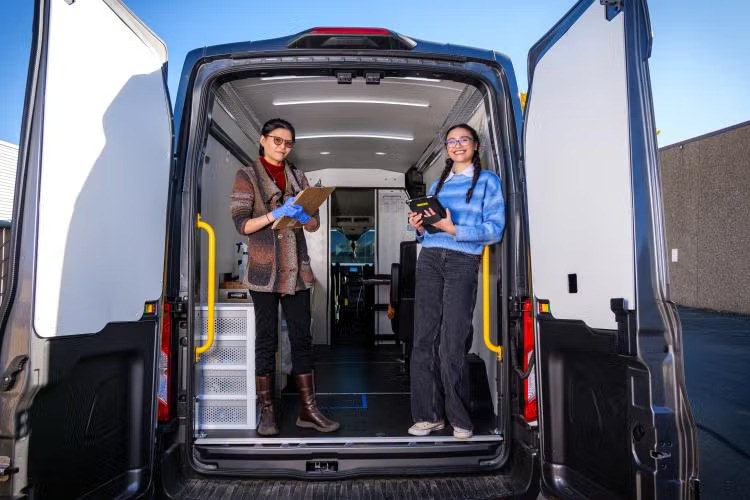A THC breathalyzer? CU research could lead to reliable cannabis breath test (CU Boulder Today)
Shift into Safe News
Law enforcement will be out in force this season, with saturation patrols and sobriety checkpoints on the lookout for impaired drivers.
Yet 12 years after Colorado and Washington became the first U.S. states to legalize recreational cannabis, police still lack a reliable method for detecting whether someone smoked a joint or ate a gummy recently and whether they are too impaired to drive.
Researchers at CU Boulder and the National Institutes of Standards and Technology (NIST) hope to help solve that problem, using a laboratory on wheels and state-of-the-art chemistry to map the peaks and declines of a cannabis high in real time.
Their new study of 45 regular cannabis users could help lead to standardized protocols for measuring impairment at the roadside and inform development of a new generation of cannabis breathalyzers.
“The ultimate goal is to develop a reliable tool that supports fair law enforcement and helps keep our roads safe,” said Cinnamon Bidwell, associate professor of psychology and neuroscience and co-director of CUChange, a lab that studies health risks and benefits of cannabis.
Needle in a haystack
Since the 1950s, police have measured ethanol in breath as an indicator of alcohol impairment. With cannabis, it’s more complicated.
Unlike ethanol, which is exhaled in copious amounts in a gaseous vapor, the main psychoactive ingredient in cannabis (tetrahydrocannabinol or THC) is exhaled in trace amounts via tiny aerosol particles.
After consuming alcohol, a person exhales 1 million times more ethanol with a single breath than they would in 12 breaths after consuming cannabis, according to one NIST study.
“With THC, it’s like looking for a needle in a haystack,” said Tara Lovestead, a NIST chemical engineer who spearheaded that study.
THC also lingers in tissues, making it hard to discern with blood or breath whether someone used an hour ago or last week.
With alcohol, there is a clearly established BAC (blood alcohol concentration) above which someone is considered impaired (.08% in most states). Because there is no clear correlation between more THC in blood and breath and greater intoxication, there is no BAC equivalent for cannabis testing — yet.
Several cannabis breathalyzers exist on the market, some being tested by law enforcement. But it’s unclear whether they can be trusted, said Bidwell.
“Scientifically, we just aren’t there yet,” she said. “There are too many questions that need to be answered first in an unbiased setting. That’s what we’re trying to do.”

A two-breath test?
In a previous pilot study, the team concluded that while it’s possible to detect trace levels of cannabis in breath, a single breath measurement cannot reliably indicate when cannabis was used or whether that person is impaired.
That could leave the door open for someone to be wrongfully accused of driving under the influence.
“It’s a huge problem and a matter of social justice,” Bidwell said.
But what if you took multiple breath samples?
To test that approach, the research team will recruit regular cannabis users between age 25 and 50. Half will use a THC-based flower strain; the other half will use a THC-based concentrate. To ensure that participants use the same product, all will get their cannabis from the same dispensary, Native Roots Dispensary in Boulder, which has worked with CU Boulder on several research projects.
Because cannabis is federally illegal, researchers are not allowed to handle or administer it. So, Bidwell’s team uses a mobile pharmacology laboratory — a white Sprinter van equipped with specialized equipment — to bring the lab to the people.
“The van enables us to measure in real time the impact of legal market forms of cannabis that people actually use,” she said.
After undergoing a baseline test in the van, participants go inside their residence and use as much cannabis as they wish. Then they return to the van for 13 breath tests over two hours and a series of tests to gauge how high they feel.
Access the full article on the University of Colorado Boulder website.
